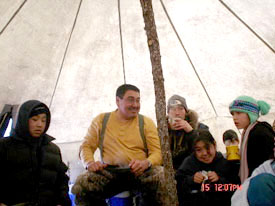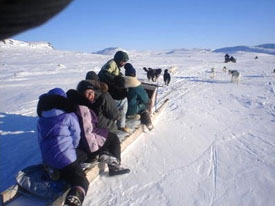In This Issue...
*
FIDO: John Senter
*
Developing a Culture of Mushers
*
The Inuit Sled Dog Registry
*
Arctic Inuit Sled Dogs: Life in Retirement
*
Inuit Dog Thesis Update
*
In the News
*
Fan Mail
*
Kennel Tip: Taking the Heat Off
*
Book Review: The Lost Men
*
IMHO: Filling the Woodshed
Navigating This
Site
Index of articles by subject
Index
of back issues by volume number
Search The
Fan Hitch
Articles
to download and print
Ordering
Ken MacRury's Thesis
Our
comprehensive list of resources
Talk
to The
Fan Hitch
The Fan
Hitch home page
ISDI
home page
Editor's/Publisher's Statement
Editor: Sue Hamilton
Webmaster: Mark Hamilton
The Fan Hitch welcomes your letters, stories, comments and suggestions. The editorial staff reserves the right to edit submissions used for publication.
Contents of The Fan Hitch are protected by international copyright laws. No photo, drawing or text may be reproduced in any form without written consent. Webmasters please note: written consent is necessary before linking this site to yours! Please forward requests to Sue Hamilton, 55 Town Line Rd., Harwinton, Connecticut 06791, USA or mail@thefanhitch.org.
This site is dedicated to the Inuit Dog as well as related Inuit culture and traditions. It is also home to The Fan Hitch, Journal of the Inuit Sled Dog.

Drawn by Eileen Emudluk
Qimmiit Utirtut - Developing a Culture of Mushers
by Mark Brazeau
Kangiqsualujjuaq, Nunavik
It has now been over a year since the conception of Qimmiit Utirtut and so far, I would say we are right on track. While some aspects of the project are easy to achieve, others might take much longer. Finding funding, obtaining pure dogs, keeping a database and breeding the dogs are all relatively easy. We consider these "controllable elements" because it is easier for us to influence their success (or failure). Of course, even the controllable elements present some setbacks, but we persevere and continue on. The "non-controllable elements" are much tougher to accommodate. These elements are influenced by people other than those committed to the success of Qimmiit Utirtut. Of all the non-controllable elements, the most challenging by far is developing a culture of mushers. Even if we repopulate the entire community with pure Inuit Dogs, we cannot force people to mush them. If every family in town ends up owning pure Inuit Dogs that are left tied beside their house, we will consider our project a failure. Reviving the pure Inuit Dog must go hand-in-hand with reviving the culture of mushing.
Reviving mushing as a way of life is a very challenging task. Inuit life now is not like it was in the past, when the people lived on the land seven days a week. Many modern Inuit families work five days a week and go camping on weekends. To get to the good hunting or fishing places, some families travel between two and five hours by snowmobile. When some hunters were asked if they might be interested in starting a dog team, they simply replied, "Too slow." The Inuit are extremely practical. So, when they need to get from point A to point B in a short time, they choose to use a snowmobile.
Besides issues of practicality, there exists a much bigger concern. In our community, mushing is a part of Inuit culture that has essentially been lost. The population of Kangiqsualujjuaq is around 800 people, with over 300 being school-aged children. Until this year, almost none of the students had ever been on a qimutsik (a qimutsik is a dog sled and a qamutiq is just the sled). Experienced mushers are rare, only a handful in the entire community and only four actively mushing. Our youth have had to rely on stories about dog sledding from their parents or grandparents, but had never been able to try sledding themselves. So instead of dog teams, they are obsessed with snowmobiles. Being a former elementary school teacher, I know this first hand. Students talk about snowmobiles, write about snowmobiles, draw meticulous pictures of snowmobiles, and look up snowmobiles on the internet. Even at a young age, they know the engine size, the track length and countless other details about a variety of snowmobile brands. As students get older, they become very proficient at repairing snowmobiles as well. Some can tear down an entire machine and put it back together with no formal training. Snowmobiling has become the culture of today's Inuit.

Daniel, John Jack and the students warm
up
with some hot
tea
Photo: Annanack
Daniel Annanack and I are in a very fortunate situation. Not only are we trying to revive dog sledding with pure Inuit Dogs, but we are also working at the school day in and day out, with all those young minds thirsting for knowledge and new experiences. A crucial element addressing these students’ needs is our school board's funding of guided culture excursions every year. These excursions have always been done with guides from the community using snowmobiles. Finding good guides is tough and many students do not always get their annual excursion. I decided to approach Daniel with three goals in mind. First, I wanted all the students to get their excursion this year. Second, I wanted every excursion to utilize dog teams. Third, I wanted Daniel, his IPL (Individual Paths of Learning) students and John Jack, Daniel's nephew and a musher who has participated in the Ivakkak for the last two years (finishing in third place this year) to be the guides for the excursions. IPL is a special program for secondary (high school) students who cannot handle the academic stream. Instead of learning math and science, they learn hands-on Inuit culture. Daniel and his students accepted the task of running the excursions.
At the end of the season, we reflected on our achievements. Our goals were not entirely met, but almost. All the students did get their culture excursion this year - thirteen excursions in all. Almost every excursion utilized dog teams, except when conditions became too slushy for the dogs. And, the IPL group ran every excursion very successfully. Feedback about the excursions has been tremendous. Several teachers who participated in the excursions were very impressed with the IPL boys. Prior to IPL, these students struggled in the regular stream, often acting out, and were labeled as troubled students or unmotivated. During the excursions, they mushed the dogs, chopped firewood, made fires, cooked the food and took care of the younger students. Before our eyes, Daniel had transformed these young boys into proud and responsible men! Parents of these students called or came to the school to express their gratitude.
Drawn
by Erik Etok
As for the rest of the students in the school, they caught a rare disease called "qimutsik fever". Students talked about dog sledding, wrote about dog sledding and drew pictures of dog sledding. On one occasion, an artist visited our school to have the students participate in making a large mural depicting our community. When I had time at the end of the day, I went to see the mural: lots of houses, mountains, happy people, and dog teams, but not one single snowmobile. A small victory for Qimmiit Utirtut.
Even now, with the ice melted and snow long gone, students drop by to visit while I feed my dogs. They speak to one another in Inuktitut and say, "Una qimmituinnaq." ("That's a pure Inuit Dog.") Sometimes adults and Elders, too, come by to see the dogs, showing interest or sharing stories from the past. Parents have called me to inquire about when we will begin breeding because their son or daughter wants them to start a dog team. The waiting list of people wanting to start a team with pure Inuit Sled Dogs is growing. I guess those "non-controllable elements" are a bit more controllable than we thought.

Ulluriaq School’s Grade 5/6 group
heading out
to Old Woman’s
Lake
Photo: Annanack
Editor's Note: If you would like to learn more about Qimmiit Utirtut or the Individual Paths of Learning, or if you wish to develop similar projects in your own northern community, or if you want to learn about Inuit culture or even if you just want to say hello, please contact Mark Brazeau at: mark_brazeau@kativik.qc.ca or by regular mail at: Box 151, Kangiqsualujjuaq, QC J0M 1N0